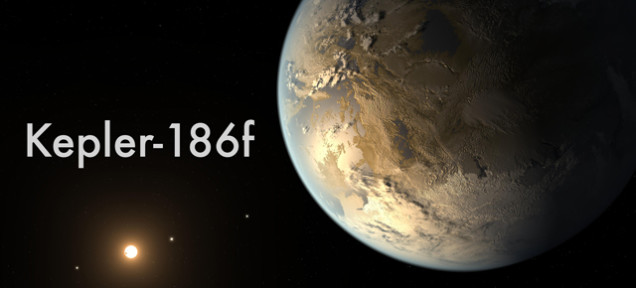When you’re looking for alien life, the best place to look is somewhere like Earth; the only place we know of that life exists. Kepler-186f, the first Earth-sized planet to be found in the habitable zone of a star, is the best bet we’ve ever found.
We’d heard details about this find a little while back, but now NASA has come out with the full announcement which adds more juicy information.
- Kepler-186f is 1.1 times the size of Earth.
- Due to its size and location, it’s likely to be rocky. It’s (probably) not some gaseous ball.
- It’s 500 lightyears away from Earth.
- Scientists hypothesize it is at least several billion years old.
- Its years are 130 days long and it gets one-third the energy from its star that Earth gets from the sun. So it’s chilly. On the chillest end of the habitable zone.
- At noon on Kepler-186f, its sun would be about as bright as ours is an hour before sunset.
- It has four brother planets, though none of them are habitable. They fly around their sun once every four, seven, 13 and 22 days, so they are way too close and too hot for life.
That’s all exciting, but unfortunately there’s also a lot we still don’t know. For instance, we don’t know:
- How warm or cold it is; the distance from the sun plays a part in temperature, but the atmosphere plays an even bigger one.
- What kind of atmosphere it has.
- If it has an atmosphere at all.
- If it has or doesn’t have water.
- If it has or doesn’t have life (duh).
- What it’s made out of, or if it’s actually made out of rock. We just know it probably is.
- What kind of gravity it has, which depends on what it’s made out of.
Still, the discovery of the first Earth-like planet in a habitable zone is a big deal, even if it is so far away that it’s pretty unfeasible to study it in detail any time in the near (or even distant) future. It’s a far cry from finding life, but it’s the closest we’ve come so far, and we’ll only be finding more planets like this as time goes on. Hopefully someday centuries and mmillennia down the line, we’ll actually be able to stop by and visit. [JPL]
The above image is only an artist’s representation of what the planet might look like. It’s waaaaay too far away to actually see that closely.
